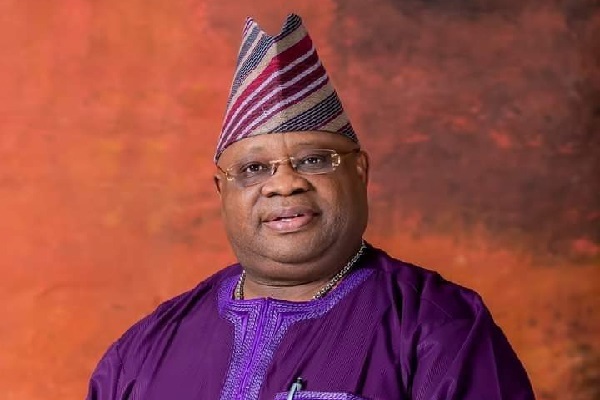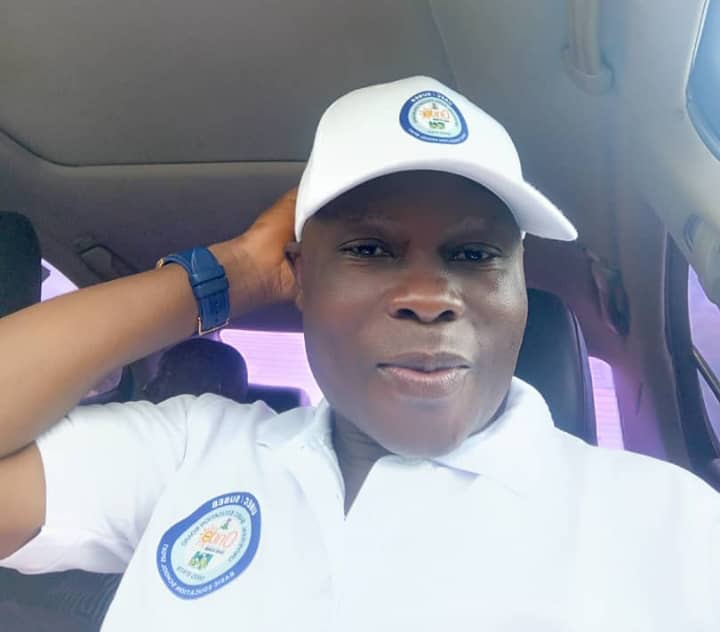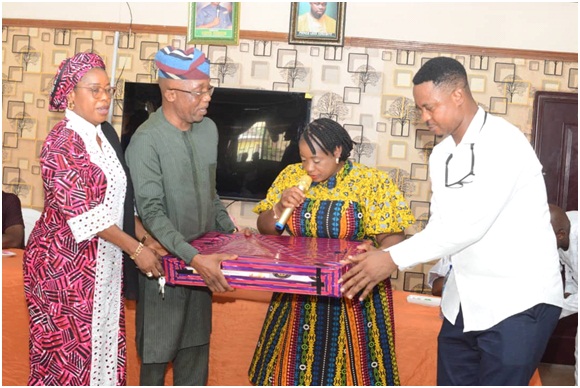Talking drums as Yoruba culture
By Adedotun Ajayi.
|
Oyo in western Nigeria is believed to be the cradle of Yoruba civilization and the talking drum is believed to have a significant role in the history of the ethnic group. The talking drum was used in the olden days as a means of communication between tribes; the drum because of its ability to mimic the spoken word effectively relayed long distance messages of coronations, deaths, celebration and war. It was also used for entertainment, praise singing, fun, folklore and leisure.
When danger approached a village, the talking drum was used to warn villagers using sounds plucked from the beat in tones that matched the speech of the land. The drumbeat travelled across the air with clarity and faster than a horse rider would, thus serving as an effective means of communication. It however required special skill to be able to play the talking drum and use it to transmit messages that were intelligible to the receiver. Like an intricate Morse code or telegraph, the pitched shaves and beats of the drum meant different words, which however had to be followed up by explanatory phrases so that the meaning was not lost in ambiguity. Traditionally, in the Yoruba empire, a drummer had a name tag with which he was known – like a handle, and messages from that drummer started off with the handle and signed off the same way. The messages were then relayed poetically with short phrase messages often becoming eight or ten times longer.
A simple call tag like Still Weather would be drummed as something like “The storm does not fall, the sun is at rest, the breeze is still, the sky does not weep” and messages such as “Come back home” would be drummed as “Make your feet come back the way they went, make your legs come back the way they went, plant your feet and your legs below, in the village which belongs to us”. In this way, the messages were passed along poetically while also ensuring clarity. Every beat meant a sound in a phrase, and every phrase coincided with a word. In this way, the words were broken up into specific phrases which were drummed out in separate sounds.
Talking drums have mystical connotations and are linked to deities and gods; the drum is also used for prayer, as a means to bless the community or an individual and as stated earlier to relay important messages. The drums shell is forged from special trees and each drum is given a name which aids it when used to communicate and invoke special favor from the ancestors.
The talking drum is one of the oldest musical instruments used by master drummers. It’s a highly stylized instrument that has its origin in the West African regions of Africa.. It is prominent among the Yoruba ethnic group but can be found in neighboring countries like Togo and Benin republic, and some other ethnic groups like the Hausa.
The Yoruba ethnic group is mostly located around the western area of Nigeria; they have transformed this ancient instrument into a thing of beauty and wonder. The drums are carved out of tree trunks and are made having an hourglass shape with long leather tension cords attached from the drum head to the base of the drum.
The crown or top side is usually made out of stretched animal skin pulled taut, which covers a hollow midsection. The drum could have a single membrane or double skinned and comes in varied sizes depending on the origin and function.
The drums are traditionally carved from tree trunks and molded into an hourglass shape. The head usually has a membrane that is made out of dried animal skin like sheep, cow or goatskin depending on the functionality. But today’s drums head are made out of suede material. They have many leather tension cords fastened to the heads which cascades down the sides and is attached to the bottom region.
The drum can be decorated with animal skin, cowries, shells and rattle beads that add to its stylized sound. The talking drum has greatly contrasting sizes such as the dual small sized Bata drum that is carried round the neck with the drum positioned chest high.
The Bata drum is played using two small drum sticks; another small talking drum is the Gangan and the larger version the Dundun. Talking drums can come in small, medium or large sizes. The smaller ones like the Bata, Gangan and Tama usually produce a pleasing rendition and could measure between 14cm to 8cm in diameter. The massive Dundun could have a length exceeding 35cm and drum head of about 20cm.
The talking drum from its description when struck produces a pitch which mimics speech tone (a prosody of human speech), the drummer does not interpret speech verbally but chooses to use an interpretive description that closely represents the spoken word. The drum can also mimic verbal speech directly when short sentences are used by beating the drum head with a bent drumstick and manipulating the leather cords. Achieving this is no mean task and it takes years to become a master drummer.
In order to create this fascinating display, the drummer places the drum between his arm and body holding the stick implement in the other hand, with the arm that grasps the drum he positions his fingers slightly around the crown. He then skillfully squeezes the tension cords which adjusts the strain on the drum head, so that, the drum when struck produces the mimic tone of a spoken language.
Only top drummers with years of studious dedication can make a talking drum talk. They can modulate pitch and render its interpretation of whole phrases in an exciting manner. Some talking drums also have cowries and beads attached to the tension cords which when shaken adds to the trilling dramatization. The drums can be played for young maidens, masquerades and cultural groups who dance to the enchanting beat.
The sound from the talking drum has both a low and high base tone. The animal skin on both ends and the shell construction is resistant, strong and weighty combined with the hourglass shape that looks like two drums attached at the mid section, contributes to the drums advanced acoustician and impressive projection capability. The leather tension cords when skillfully manipulated alongside the drum sticks produces an enhanced low or high pitch depending on the master drummer’s fundamentals.










